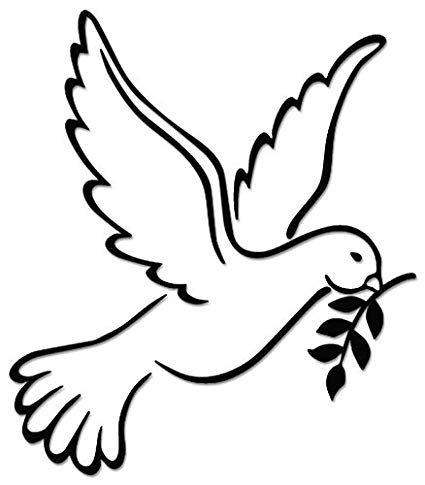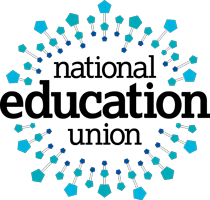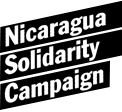UN Human Rights Report ignores the human rights of the majority of Nicaraguans
NSCAG News |
on: Wednesday, 18 September 2019

Since the violence and polarisation of 2018 that profoundly shook the whole country, all polls have indicated that the overwhelming majority of Nicaraguans want dialogue, peace, stability, respect for their basic human rights, and a secure future for themselves and their families.
However, international institutions and human rights organisations who publish heavily biased reports contribute little to building an objective understanding of the complex reality that Nicaragua faces, or advancing the cause of peace and reconciliation that Nicaraguans, particularly those who are most impoverished, long for.
The latest of these is a report published by the UN Office of the High Commissioner for Human Rights (OHCHR) on 10 September.
The myth of peaceful protestors
Through relying entirely on information from sources sympathetic to the opposition, the persistent narrative of these reports is the grossly over simplistic myth of ‘peaceful’ protestors brutally repressed by the Nicaraguan authorities. The OHCHR report omits information that doesn’t fit this narrative, distorts the truth, and contains basic factual errors. (Even the size of the country is wrong!) Serious crimes perpetrated by ‘peaceful protestors’ are dismissed as ‘simple abuses’: lies and distortions are repeated constantly within Nicaragua and externally become the ‘truth’.
In what other country would blocking main highways and entry into major cities for three months paralysing the whole country be considered ‘peaceful’protest? The deliberate coordinated opposition strategy of establishing roadblocks and barricades at key points denied the general population their rights to work, to freedom of movement, to study, to access health care, or even to purchase food.
Why is it that international bodies choose to ignore the way in which ‘peaceful’ protestors fanned the flames of conflict through fake news perpetrated through the social media, or the many well documented examples of murder, torture, kidnapping, intimidation, arson, extortion, and sabotage of public buildings committed by ‘peaceful protesters’?
Dismissing opposition violence as the actions of rogue individuals
Instead of recognising that such violence was an intrinsic part of opposition tactics, when the OHCHR briefly mentions ‘the killing and injuring of police officers and members of the Sandinista political party, as well as the destruction of public infrastructure’ the significance of this is minimised as being perpetrated by ‘individuals’ involved in the protests. Yet these actions were both widespread and systematic and represented gross violations of the human rights of the whole population, leaving them severely traumatised and unable to go about their daily lives. This particularly affected those already impoverished and therefore most vulnerable.
These were not ‘simple abuses’ as the OHCHR chooses to characterise them: they were grave crimes.
Inflated death figures from corrupt NGO fan the flames of conflict
Because of the lack of transparency of the report it is impossible to tell how much the OHCHR relied on local organisations for their information, but they make clear that it formed at least part of their evidence. Yet, despite recent evidence of the bias of these organisations, the OHCHR appears to have no reservations as to their integrity.
For example, one human rights organisation that international bodies and the media have relied on heavily for information is the ANDPH (Nicaraguan Human Rights Association). This organisation, funded by the US National Endowment for Democracy and National Democratic Institute, grossly inflated the number of deaths that occurred during the violence by including people who were actually alive, and others whose deaths had nothing to do with the conflict. These gross inaccuracies have recently been admitted by ANDPH staff.
The repetition of these figures in the international media were in turn taken up by US politicians seeking to discredit and destroy the Sandinista government.
On 23 July 2019, the ANPDH’s board of directors filed a complaint against Álvaro Leiva Sánchez, their director, accusing him of stealing nearly half a million US dollars, falsifying signatures and altering financial reports. International bodies who repeated such fraudulent information have remained silent.
The only way forward is through dialogue
The OHCHR report rightly points out that the conflict in Nicaragua can only be resolved peacefully through dialogue and points out the negotiations between the government and the Civic Alliance for Justice and Democracy instigated by the government in February 2019.
However, the report fails to acknowledge the considerable obstacles the Government has faced in pursuing negotiations with a fragmented, disunited opposition with some groups supporting dialogue but others continuing to insist on the resignation of the entire government or demanding a return to the violent roadblocks. Nor does it point out that by late May of this year even the OAS representative and the Papal Nuncio accepted that the dialogue had failed because the opposition was too disunited and intransigent for further progress to be made.
Despite these obstacles, the positive outcomes of the negotiations have been the release of those detained during the violence and the government initiative to set up Commissions for Reconciliation, Justice and Peace at national, municipal and community levels. While failing to recognise the significance of these actions, the OHCHR focuses on complaints about alleged deficiencies in the judicial system and minimises the crimes committed. For example, on the right to a fair trial, the report says:
Individuals who participated in the protests, took part in picket lines and roadblocks, collected money or supplies to support demonstrators, or fired home-made mortars against security forces, faced charges that were disproportionate to the seriousness of those acts. They were usually charged with terrorism, financing terrorism, kidnapping, organized crime, and illegal possession of arms.
Bias perpetrated through omissions
This extraordinary description depicts protesters as ‘individuals’ (implying they were not part of a co-ordinated organisation) but more significantly completely ignores the real and serious crimes committed. For example, there is no reference to the attack on the police station on Morrito by around 200 armed protesters which left five dead and nine kidnapped and beaten before they were eventually released.
The OHCHR report later mentions the convictions of the two ring-leaders of this gross act of violence in a normally peaceful town, and describes the heavy prison sentences passed against them as ‘disproportionate’. In what other country would those guilty of this crime been given lenient sentences? Even so, like the others who committed such crimes, these two ring-leaders were released under the June 2019 amnesty and have renewed their verbal attacks on the Government.
While the Morrito attack was one of the worst incidents, there were hundreds more acts of violence perpetrated at the roadblocks. These were crime scenes that for several weeks operated under opposition control. The roadblocks were often controlled by criminals who attacked or threatened to attack anyone seen to be supporting the government, imposed an economic blockade, intimidated whole populations and carried out robbery, extortion, torture and murder. None of this is described in the OHCHR report.
Ignoring the influence of outside actors
In their haste to condemn the Nicaraguan government for human rights abuses the OHCHR report fails to make an objective assessment of the fundamental causes of the conflict including the interference of outside actors.
The report recognises the fundamental problem that Nicaragua faces that represents a violation of the human rights of a quarter of the population – that is high levels of poverty and inequality. While it also recognises the comprehensive Government efforts to tackle poverty, the report implies that the inevitable economic and social damage caused by last year’s protests was the Government’s fault (‘the persistent socio-political crisis’), when so much of the damage to infrastructure and commerce was caused by the protesters. This merely echoes the continuing claims by the opposition bodies that the economic problems are caused by the Government, even as they call for intensified economic sanctions by the US which would, of course, inflict further damage.
Ignoring the human rights of the majority
Since returning to power in 2007, the Sandinista Government has implemented a well-integrated National Human Development Plan that focuses on poverty eradication and the wellbeing of the population. Significant progress towards achieving this goal has been made through free health care and education programmes, infrastructure development, social development programmes and economic stability.
The most telling indictment of the OHCHR report is that it minimises how the great majority of Nicaragua’s population suffered not only the devastating economic, social and emotional effects of opposition violence between April and July 2018 but also the ongoing economic impact which the government is tackling but will undoubtedly continue well into 2020 and perhaps beyond.





